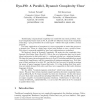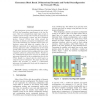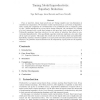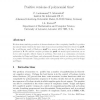106 search results - page 5 / 22 » Light Logics and Optimal Reduction: Completeness and Complex... |
AIML
2004
13 years 8 months ago
2004
abstract. The aim of the present paper is to analyze the complexity of strict implication (together with falsum, conjunction and disjunction). We prove that Ladner's Theorem r...
PODS
1994
ACM
13 years 11 months ago
1994
ACM
Traditionally, computational complexity has considered only static problems. Classical Complexity Classes such as NC, P, and NP are de ned in terms of the complexity of checking {...
IPPS
2006
IEEE
14 years 1 months ago
2006
IEEE
The development of Field Programmable Gate Arrays (FPGAs) had tremendous improvements in the last few years. They were extended from simple logic circuits to complex Systems-on-Ch...
CORR
2008
Springer
13 years 7 months ago
2008
Springer
Pure, or type-free, Linear Logic proof nets are Turing complete once cut-elimination is5 considered as computation. We introduce modal impredicativity as a new form of impredicati...
IANDC
1998
13 years 7 months ago
1998
We show that restricting a number of characterizations of the complexity class P to be positive (in natural ways) results in the same class of (monotone) problems which we denote ...




